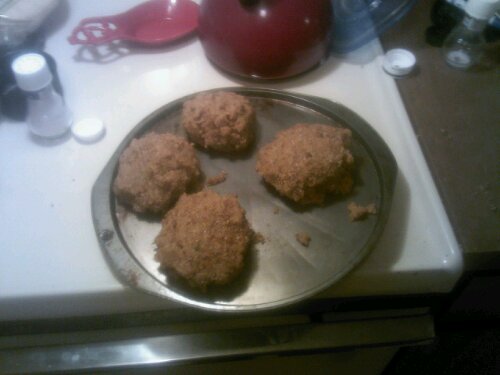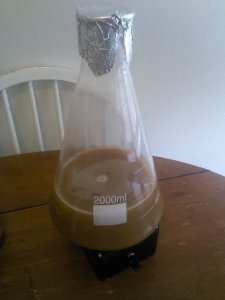Clones are a controversial subject. The first “real” clone was in 1995 which actually used human cells before “Dolly” even come into existent. Of course, they didn’t allow the human cells to become a baby, just a group of cells. The human cells actually had 1% genetic code from a cow. A clone with a twist. Source
Clone brews are also an interesting subject, but not a very controversial one. There are books on the subject. Some clone brews take a lot of ingredients others are quite simple. Odell’s IPA has over 7 different hops in it. Some clones are simple, I made what I thought was a simple one.
Honestly, I haven’t made many clones, actually I’ve only made one. I’ve made plenty of beers that have been influenced by certain beers, but never something exact.
I decided to do my first clone brew this weekend. I decided on a beer I’ve drunk a few cases of over the years, but one not readily available to me. I chose Gumball Head from 3 Floyd’s Brewery located in Munster, IN.
 The recipe is as follows:
The recipe is as follows:
Brew Method: All Grain
Style Name: American Wheat or Rye Beer
Boil Time: 60 min
Batch Size: 11 gallons (fermentor volume)
Boil Size: 13 gallons
Boil Gravity: 1.043
Efficiency: 75% (brew house) Actual efficiency: 47%
STATS:
Original Gravity: 1.051 Actual OG: 1.032
Final Gravity: 1.015 Actual FG: Still fermenting
ABV (standard): 4.65%
IBU (tinseth): 27.09
SRM (morey): 5.43
FERMENTABLES:
6 lb – American – Pale 2-Row (30%)
12 lb – American – Wheat (60%)
2 lb – Belgian – CaraVienne (10%)
HOPS:
0.5 oz – Amarillo, Type: Leaf/Whole, AA: 8.6, Use: First Wort, IBU: 4.35
0.5 oz – Amarillo, Type: Leaf/Whole, AA: 8.6, Use: Boil for 60 min, IBU: 7.19
1 oz – Amarillo, Type: Leaf/Whole, AA: 8.6, Use: Boil for 15 min, IBU: 7.14
2.5 oz – Amarillo, Type: Leaf/Whole, AA: 8.6, Use: Boil for 5 min, IBU: 7.17
2 oz – Amarillo, Type: Leaf/Whole, AA: 8.6, Use: Boil for 1 min, IBU: 1.24
3 oz – Amarillo, Type: Leaf/Whole, AA: 8.6, Use: Dry Hop for 7 days
MASH GUIDELINES:
1) Infusion, Temp: 153 F, Time: 60 min
Starting Mash Thickness: 1.5 qt/lb
YEAST:
Wyeast – London ESB Ale 1968
Starter: No
Form: Liquid
Attenuation (avg): 69%
Flocculation: Very High
Optimum Temp: 64 – 72 F
The fermentors are bubbling away in the garage. I am still waiting on dry hopping them. I’ll let everyone know how it turns out.
I had really crappy efficiency, the worst ever. I don’t know what happened, but I’m sure I’ll find out. My batch a few weeks before had 77% efficiency. I may have added 1-3 more gallons of water or the mill at the homebrew shop may have been adjusted by a fellow homebrewer. Any ideas absent followers?

Current Homebrew Setup

 The recipe is as follows:
The recipe is as follows:
















